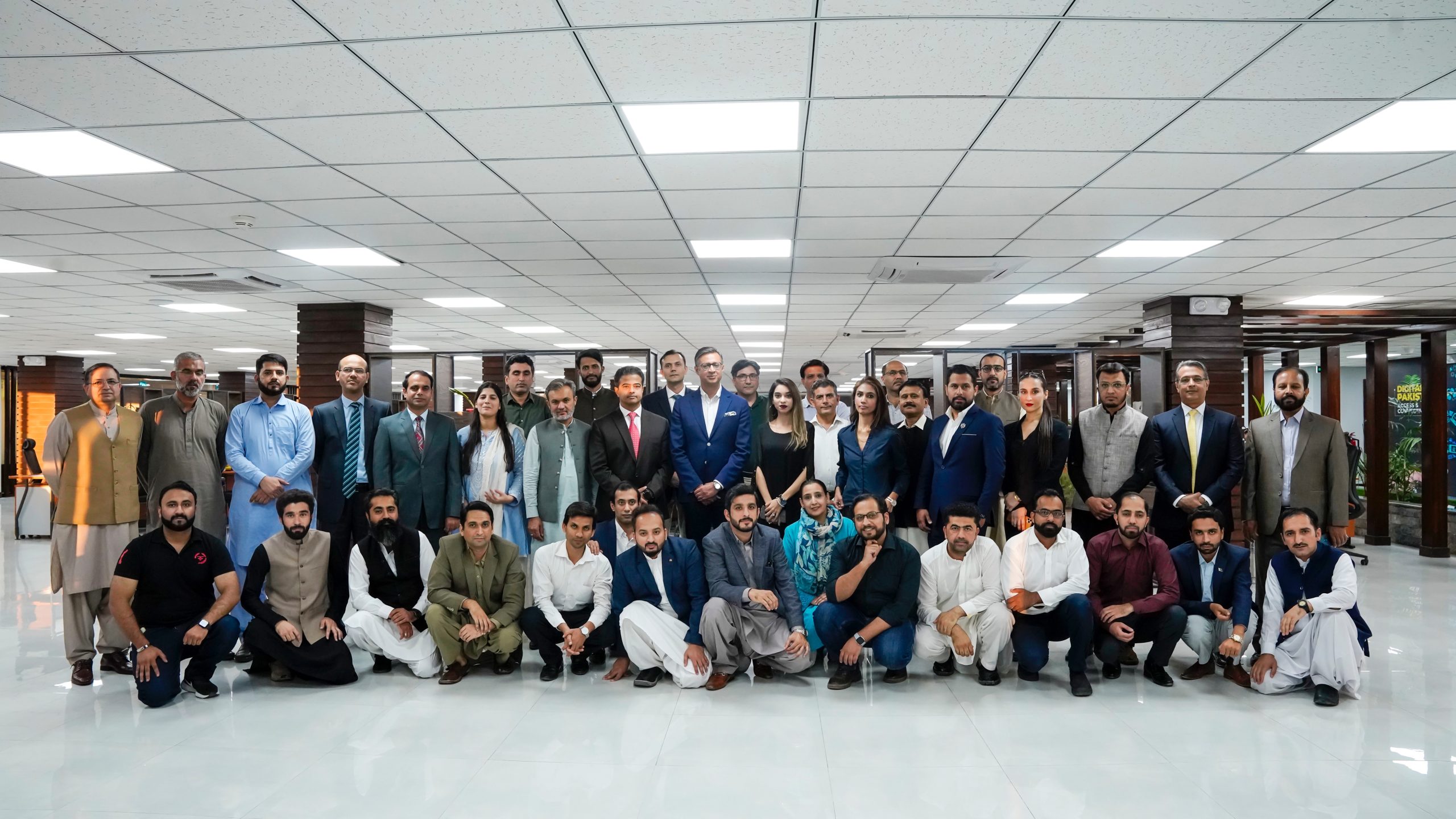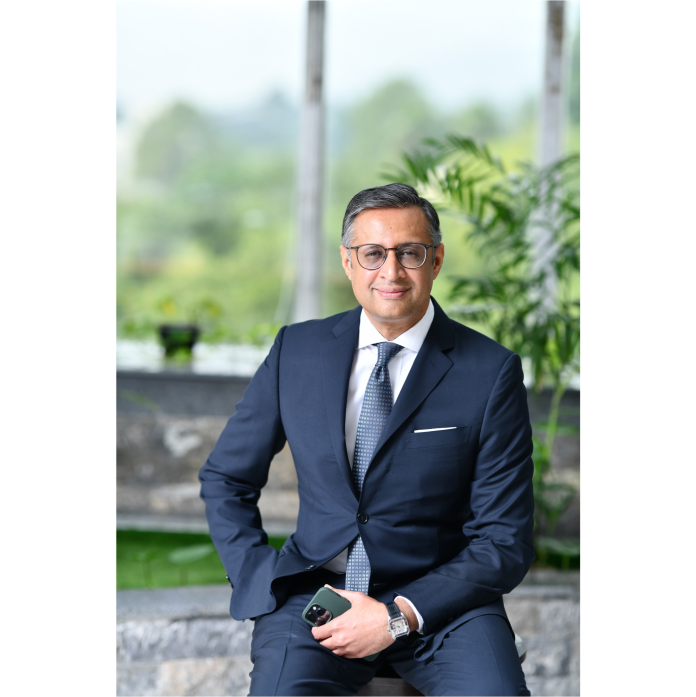SYNERGYZER: What is Universal Service Fund (USF), and how is it empowering marginalized communities?
HARRIS M. CHAUDHRY: Universal Service Fund (USF) was established in 2006 by the Ministry of Information Technology (IT) and Telecommunication to ensure the provision of Information and Communication Technologies (ICT) services in un-served and under-served areas across Pakistan by making broadband available and affordable for all. USF is a public-private partnership (PPP) with a Board of Directors comprising representatives from both the private and public sectors. The fund solely consists of the contributions (1.5% AGR) made by the telecom operators. USF offers financial assistance to telecom operators to provide ICT services in areas deemed to be commercially unviable to address access gaps and possible market failures in far-flung and isolated locations.
By shortening distances, we are not only enabling the rural communities to communicate, work and learn but also deal with public administrations, manage payments and finances, and facilitate access to digital healthcare systems, thus improving their lives and livelihoods. We have digitally enabled and empowered approximately 33.3 million people living in over 18,000 mauzas across the country. Moreover, we have laid approximately 12,400 km of optical fiber and provided seamless connectivity to 1,900 km of un-served road segments on the National Highways and Motorways of Pakistan.
SYENRGYZER: Since its inception in 2006, what has been USF’s major achievements so far?
HARRIS M. CHAUDHRY: Over the years, USF has made significant progress and has achieved various milestones. However, it is pertinent to highlight our phenomenal growth in the last three years. In the initial years from FY2006-19, USF completed a total of 76 projects and provided connectivity to about 11 million people with subsidy disbursement of Rs57 billion, whereas, from 2019 to date, USF has contracted 85 projects and provided connectivity to 22 million people with subsidy disbursement of Rs83.55 billion. I feel proud to tell you that 8% of the total telecom network in our country is powered by USF and by the end of the fiscal year, around 45% of Balochistan’s infrastructure will be deployed by USF.
SYNERGYZER: Has there been any particular province in focus?
HARRIS M. CHAUDHRY: We are focused on providing high-speed mobile broadband access in Punjab, Sindh, Balochistan and Khyber Pakhtunkhwa (KPK) provinces. Our Federal Minister for IT and Telecom, Syed Amin Ul Haque and our Board of Directors ensure that all provinces are treated fairly; no specific province is given priority.
SYNERGYZER: What are some of the reasons why these marginalized communities are not covered by local telecom providers?
HARRIS M. CHAUDHRY: Well, the cost of broadband deployment and maintenance is typically expensive in such areas due to sparse population density and difficult terrains. Therefore, the rural and remote areas are often not considered viable business cases by the operators as they are unlikely to earn enough revenue to cover their costs.
SYNEGYZER: What kind of services does USF provide to these underserved, un-served communities?
HARRIS M. CHAUDHRY: USF provides voice, high-speed mobile broadband data and optical fiber services to these communities under its flagship programs. Our Next Generation – Broadband for Sustainable Development program focus on the provision of high-speed mobile broadband connectivity to the un-served and under-served areas of Pakistan, the National Highways and Motorways of Pakistan and the Tourist Destinations of Pakistan. Some of the tourist locations include Babusar Top, Lake Saif-ul-Malook and Sharan Forest in Manshera district, Kumrat Valley in Upper Dir district, Mahodand Lake in Swat district and Galiyaat.
Apart from setting up BTS Towers, we are also successfully laying optical fiber in Unions Councils of Pakistan under our Next Generation – Optical Fiber Network & Services program, which is one of a kind as we are connecting 25% of the nearby telecom towers with optical fiber, thus paving the way for 5G wireless technology.
SYNERGYZER: What is USF’s policy on sustainability? Has it had a formal sustainability programme?
HARRIS M. CHAUDHRY: At USF, we recognize the critical role that renewable energy plays in sustainability planning not only to preserve the planet’s natural resources but also to protect our core values as they relate to diversity, growth and innovation. I believe climate change is one area where we all, as individuals and as organizations, can contribute positively towards alleviating the threats we face. It is precisely with this mindset that we took the lead in promoting the use of clean and renewable energy sources. Our projects are energy efficient as we continue to set up self-sustainable mobile networks with higher efficiency through solar-powered telecom towers as well as optical fiber nodes. These solar-powered cell towers and optical fiber nodes contribute significantly towards eliminating gas emissions in comparison to the smoke generating diesel gensets and provide mobile operators substantial benefits from the net-metering opportunities being presented by current utility providers.

SYNERGYZER: As mobile data continues to grow, and more 4G/5G networks will be deployed, how are telecoms planning to curb their impact on carbon emissions?
HARRIS M. CHAUDHRY: To help the industry move towards a more sustainable future, the GSMA has developed a ‘Sustainability Assessment Framework’ and ‘The ESG Metric for Mobile’ that guides operators to reduce their emissions by at least 45% between 2020 and 2030 and has set key performance indicators (KPIs) and Environmental, Social, and Governance ESG standards for companies to integrate into their broader corporate strategies and measure progress against it. Telcos have a historic opportunity to help other industries become more energy efficient. Smart products and solutions from telcos—e.g., smart agriculture and smart logistics—are already available that can help other industries reduce their carbon emissions by an amount up to 10 times the telco industry’s own emissions.
SYNERGYZER: What measures has the telecom industry taken over the last few years to reduce its carbon footprint?
HARRIS M. CHAUDHRY: Presently, there is no regulatory framework put in place for the telecom industry with regard to reducing their carbon footprint. All the telcos are working in silos; the industry has yet to come together to achieve this shared vision.
SYNERGYZER: In your opinion, what are some of the key targets a telecom company should focus on to promote sustainable practices?
HARRIS M. CHAUDHRY: Telcos can promote sustainable practices by developing a net-zero emissions plan, by investing in energy-efficient technology not just for their networks but also for lighting, monitoring, and cooling their systems and by deploying hybrid solutions at cell sites to reduce its greenhouse gas (GHG) emissions.
SYNERGYZER: What are some of the challenges the telecom industry faces to implement sustainable practices?
HARRIS M. CHAUDHRY: Pakistan’s telecom industry is facing serious challenges due to an unprecedented increase in operating costs of fuel, electricity, interest rate, tax and currency’s devaluation. For the telcos to fully focus on sustainability, I believe a policy intervention is required first to facilitate the industry in order to create an enabling environment.
SYNERGYZER: How do you foresee the future of telecom in Pakistan with regard to sustainability?
HARRIS M. CHAUDHRY: While the operators’ efforts to address energy consumption are front and center of their plans, there is no doubt they can play a much more integral role in helping the country achieve its sustainability goals. Moreover, supportive regulatory and policy environments to de-risk and attract investments in renewable energy are paramount.
For USF, with respect to the current deployment of sites, 94% of the USF network will be solar-powered by the end of this fiscal year. As we continue to enable and empower rural communities with digital inclusivity, we are sending out a symbolic message about the importance of global and concerted action for the promotion of sustainable energy development and the fight against climate change while contributing to the Sustainable Development Goal 7 (SDG7) – Affordable and Clean Energy and Pakistan’s Clean Green initiative.
SYNERGYZER: How educated and engaged are your employees toward sustainability?
HARRIS M. CHAUDHRY: As I mentioned earlier, sustainability is part of our core values; therefore, achieving the United Nations (UN) 2030 Agenda for SDG is deeply embedded in our business. From time to time, we run sustainability awareness campaigns to help the employees understand how sustainability works and what the benefits are in creating a corporate culture that focuses on energy efficiency and sustainability.
Our efforts are increasing Pakistan’s economic well-being and competitiveness as we contribute to the realization of SDG 9 – industry, innovation and infrastructure; SDG 5 – gender equality; SDG 7 – affordable and clean energy; SDG 10 – reduced inequalities; SDG 13 – Climate Action and SDG 17 – Partnership for the Goals.
SYNERGYZER: What are USF’s short and long-term targets for the future?
HARRIS M. CHAUDHRY: Our commitment to the future will be no different, and we plan to move ahead with the same speed and spirit without strategic goals of meaningful connectivity and sustainable digital transformation. This year, we are committed to empowering approximately 15 million people by launching 28 projects with a subsidy commitment of about Rs32 billion, which includes all high-speed mobile broadband and optical fiber projects.
We are aware of the challenges of fast-tracking the digital ecosystem for remote communities; however, at the heart of our resolve is our unwavering determination to see these marginal communities and stand shoulder-to-shoulder with the rest of the world.

